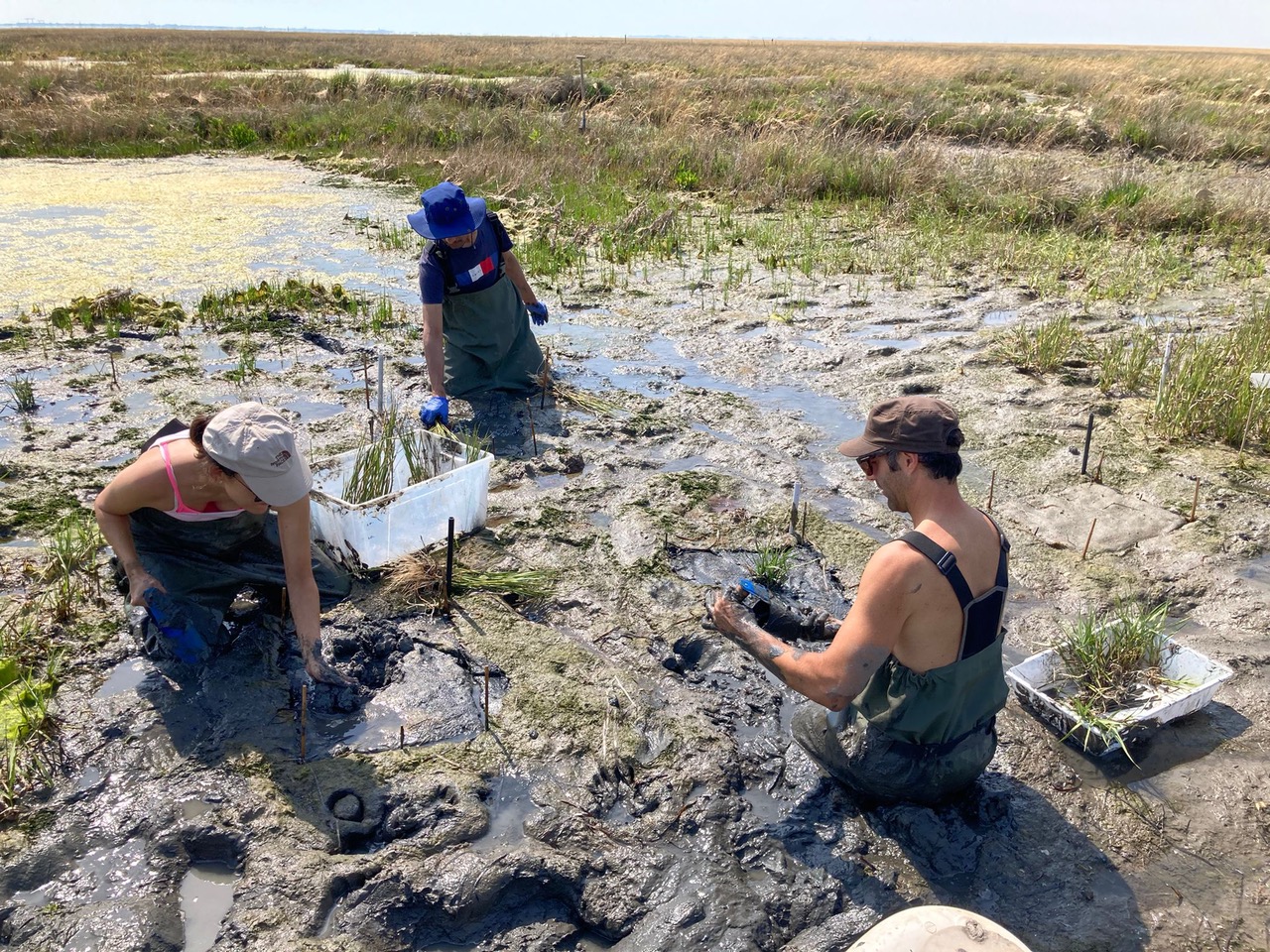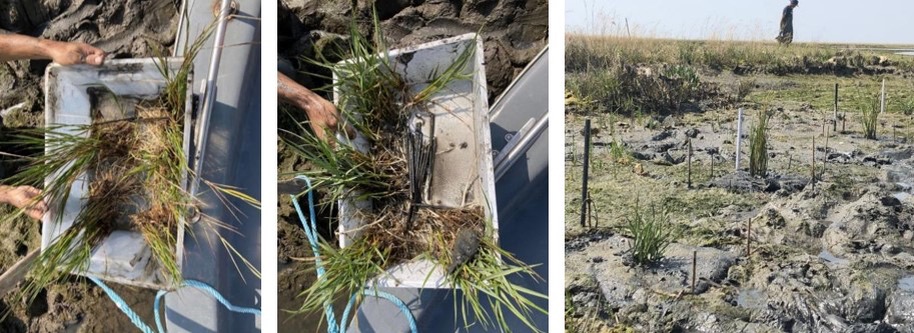Ecological restoration actions to support native and endangered plant species
Ecological restoration actions

To reverse the significant and alarming rate of salt marsh loss in the Venetian Lagoon, extensive areas of in-fills, officially known as "morphological reconstructions", have been created using dredged materials, often with a high sand content. Observed differences between natural and artificial marshes include the presence, growth and distribution of different salt-tolerant plant species. Recent experiments by Serena De Lauretis (PhD candidate at the University of Padua) compared native and alien varieties of cordgrass in particular.
Previous investigations had reported the complete absence of native cordgrass, Sporobolus maritimus (also known as Spartina matittima) on reconstructed infills designed as new salt marsh in the Lagoon suggesting that conditions in these new areas might not be hospitable habitats for all species of halophyte that are characteristic of natural salt marsh. Conversely, Sporobolus anglicus (originally introduced to help protect Venetian salt marsh from erosion that subsequently became an invasive, aggressive competitor to the native cordgrass, S. maritimus) is commonly found on infills in the lagoon of Venice.
The experiment

The experiment consisted of transplanting groups of both the invasive and the indigenous forms of cordgrass in a trial area with two distinct substrates – clay taken from a natural marsh and sandy sediment sampled from a reconstructed area in order to test whether sediment type is a determining factor as regards the growth and propagation of the native variety.

Results
S. maritimus died off in almost all the trials while S. anglicus had a much higher survival rate, indicating that native cordgrass is more sensitive to mechanical stresses (e.g. uprooting due to erosion). The invasive, alien variety was also more successful at spreading itself by vegetative shoots, reinforcing its colonisation potential at the expense of indigenous cordgrass. These findings will be useful for conservation planning since habitat resilience depends on ensuring the survival of native rather than invasive species to avoid a trend towards monoculture rather than enhancing biodiversity.
◾